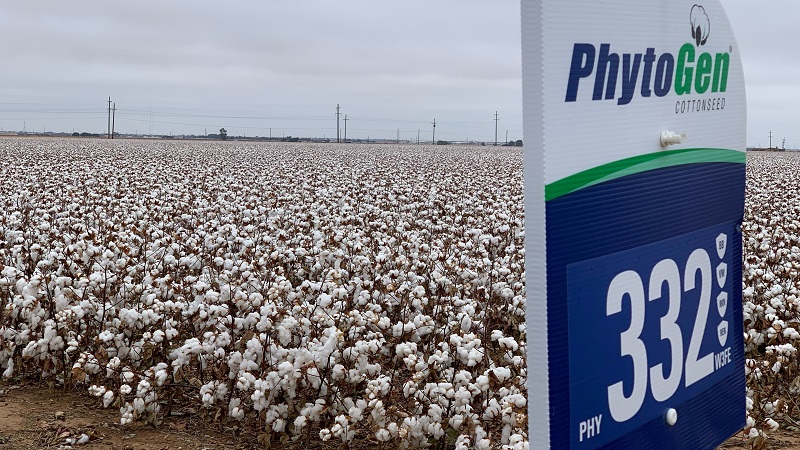NCC Board Updated on Key Industry Issues
Officers, directors and advisors of the National Cotton Council (NCC), along with other industry leaders, were updated on key issues and upcoming challenges and opportunities facing cotton during NCC’s recent Mid-Year Board meeting in New Orleans.
NCC Chairman Jimmy Dodson said the most critical challenge facing the U.S. cotton industry is timely passage of a new multi-year farm bill. He said the NCC’s Farm Policy Task Force has been closely monitoring this situation, reviewing various scenarios and considering options/strategy for the industry.
Among pressing trade matters the NCC has been involved in this year, Dodson said, are international contract defaults, the Trans-Pacific Partnership negotiations, the Peruvian countervailing duties (CVD) investigation and the World Trade Organization (WTO).
Regarding the WTO Doha negotiations, Dodson noted his involvement in a NCC delegation that participated in meetings in Geneva in conjunction with the annual WTO Cotton Development Assessment. During those meetings, the NCC had the opportunity to highlight the drastic changes in the cotton market over the past five years and inform WTO officials that all cotton growers share the concern about cotton’s loss of market share in the world fiber market. In terms of possible outcomes from the upcoming WTO Ministerial, Dodson said the NCC has emphasized that the reduction in support in the proposed U.S. cotton policy should be recognized in the WTO.
Dodson said the NCC continues to work on several environmental regulatory concerns, including pollinator protection, clean water permits, spill prevention and OSHA rulemaking. Along with work on these, the NCC is focused on the federal approval of new biotech crops and has joined other agricultural groups in emphasizing the need for new traits to fight resistant weeds.
Among other current NCC activities Dodson noted were work by NCC’s Contract Arbitration Study Committee, ongoing efforts to improve U.S. cotton flow by NCC’s Performance and Standards Task Force, and NCC’s continued emphasis on contamination prevention through a variety of educational programs and articles in various publications.
“Despite our industry’s consistently high ratings by the International Textile Manufacturers Federation (ITMF) in their contamination surveys,” Dodson stated, “we believe it is critical to remain vigilant and continue the efforts that have earned us an excellent reputation.”
John Maguire, NCC senior vice president, Washington Operations, provided an update on the status of the farm bill, as well as a review of key environmental and trade policy issues facing the U.S. cotton industry. He outlined the key differences between the House and Senate versions of the farm bill and highlighted the possible Congressional schedule for the coming weeks – noting, in particular, that after Congress returns on September 9, only nine legislative days will remain before October 1.
In his economic update, Gary Adams, NCC vice president, Economics & Policy Analysis, told attendees that China’s stocks policy is a key to future price direction. Building China’s reserves has provided support to prices, but there are concerns about long term impacts on cotton demand. Cotton still has the challenge of competing with $0.75 polyester on the demand side, while trying to hold acres in the face of competition from grain and oilseed prices.
Regarding U.S. production, Adams noted USDA’s recent 2013 production estimate of 13.05 million bales versus 17.32 million bales in 2012. He cautioned that the final crop size still could be considerably different from the August estimate due to the lateness of the crop and uncertainties on the effects of weather.
Christy Birdsong, NCC general counsel, updated directors on the Peruvian CVD investigation by Peru’s National Institute for the Defense of Competition and Intellectual Property (INDECOPI). The organization is reviewing U.S. cotton subsidies and potential damage to Peruvian cotton producers.
She said Gary Adams will again travel to Lima to provide a critique of the “Essential Facts” analysis and again argue against a CVD. She said the U.S. Trade Representative’s (USTR) office and Peruvian textile firms also will present at the hearing, and “again, we’ve been working closely with both groups to provide a united front.” A final determination is expected in late September.
Birdsong said if there is a CVD, the NCC will be looking at ways to “minimize the impact, shorten the length of time imposed and minimize the amount. Aside from CVD itself, we’re mindful of copycat actions by other countries against other subsidized commodities. Corn, soybeans, wheat, and rice could be vulnerable. USTR shares our concern.”
Cotton Council International (CCI) President John Burch, a California cooperative official, updated directors on CCI’s activities, and said that in spite of last year’s reduced crop and the challenging volatility in cotton prices, CCI’s support base has continued strong.
“That enables CCI to compete with around 85 other organizations for available matching public funding administered by USDA in support of export market development,” Burch said. “Since our industry is more than 90 percent export dependent, we know how important competing for markets is to our livelihoods.”
Burch said CCI is seeing accelerated consolidation in the global brand and retail segments and continued market instability. Much of that, he noted, is the result of uncertain and unsustainable policies, especially in China and India. He said this means that with brands and retailers increasingly consolidating, they are looking to mitigate risk.
“They want a better understanding of their supply chain. With 15 offices overseas covering 50 countries, this plays to our strength,” Burch said. “But we will need to work both harder and smarter to grow the demand to insure we have profitable business operations. That is why I am excited to see CCI and Cotton Incorporated are involved in developing the Cotton LEADs program to demonstrate to brands and retailers the responsibility and commitment of U.S. producers.”
Source – National Cotton Council









